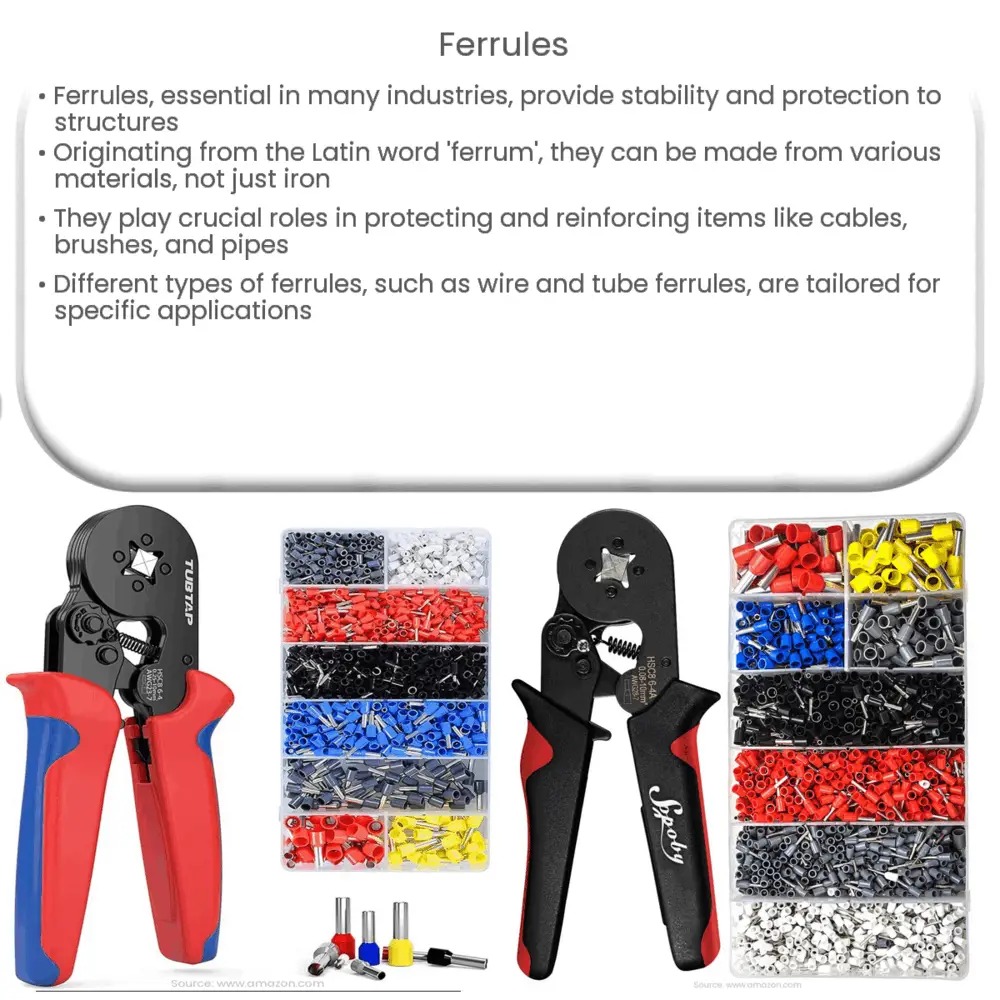Explore the importance of ferrules, their types, uses, and manufacturing process in our detailed guide. Small components making a big impact!

Ferrules: A Comprehensive Understanding
Ferrules, an often overlooked yet integral component in various industries, serve critical functions that range from providing stability to protecting structures from wear and tear. This article delves into what ferrules are, their uses, the different types, and why they are so important.
What Are Ferrules?
A ferrule is a type of metal sleeve or cap placed over a material to protect it, bind it, or provide structural reinforcement. The term ‘ferrule’ derives from the Latin word ‘ferrum’, which means iron. However, ferrules can be made from a variety of materials, not just iron.
The Significance of Ferrules
Ferrules play a vital role in a host of applications. They often go unnoticed due to their small size and seemingly simple function. However, without these tiny components, many of our daily-use items, like cables, brushes, and pipes, would degrade quickly.
- Protection: A key role of ferrules is to offer protection. They prevent damage to the ends of cables, wires, and tubes by providing an extra layer of robust material that withstands strain and stress.
- Reinforcement: Ferrules also reinforce the structures they’re applied to. For instance, a ferrule on a cable can prevent fraying and provide additional strength to bear loads.
Types of Ferrules
There’s a wide array of ferrules available, each tailored for a specific application. Some of the most common types are:
- Wire Ferrules: These are used in electrical wiring to prevent individual wire strands from fraying and to ensure a secure connection.
- Tube Ferrules: Tube ferrules, commonly used in plumbing and heating systems, provide a secure seal between pipes and fittings.
- Golf Club Ferrules: These ferrules join the shaft of the golf club to its head, providing a smooth transition and protecting the shaft from damage.
While the above is not an exhaustive list of ferrule types, it gives a good insight into the diversity of this small yet crucial component. In the following section, we will explore the manufacturing process of ferrules and how they have evolved over time.
Manufacturing Process of Ferrules
The manufacturing process of ferrules depends on the type and intended use. However, the general process involves shaping a suitable material into the desired size and shape, followed by the application of a finishing treatment to increase durability. Materials commonly used include metals like brass and stainless steel, and sometimes plastic for specific applications.
- Shaping: The shaping process often involves extrusion or drawing, where the material is pushed or pulled through a die to achieve the desired shape and size.
- Finishing: The finishing process includes treatments like coating, galvanizing, or polishing to enhance corrosion resistance and improve appearance.
The Evolution of Ferrules
Over the years, ferrules have evolved to meet the growing needs of various industries. Initially, ferrules were simple, manually crafted metal bands used mainly in woodworking and plumbing. However, as technological advancements pushed the boundaries of what was possible, ferrules started being used in more sophisticated applications like electronics and telecommunications.
Today, ferrules are produced using high-precision machinery, ensuring uniformity and precision, crucial in modern industrial applications. With advancements in material science, the variety of materials used to make ferrules has also expanded, leading to ferrules that are lighter, stronger, and more durable.
Conclusion
In conclusion, ferrules are fundamental components in many aspects of our daily life, even if they often go unnoticed. They offer essential protection and reinforcement to a variety of structures, from simple cables to complex industrial machinery. With an array of types available, each designed for a specific application, ferrules are an excellent testament to how small details can make a significant impact.
As we move forward into an increasingly technology-driven era, the demand for high-precision, durable ferrules is only set to increase. It is through these small but significant components that we can continue to ensure the reliability and longevity of our equipment and systems.



